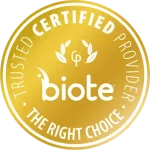
We are committed to providing hormone replacement treatments for both men and women. Our knowledgeable and compassionate team is here to help navigate the sensitive health challenges caused by hormone imbalances, ensuring you receive the care and support you need.



We are committed to providing hormone replacement treatments for both men and women. Our knowledgeable and compassionate team is here to help navigate the sensitive health challenges caused by hormone imbalances, ensuring you receive the care and support you need.
Hormone imbalance in women can cause symptoms ranging from subtle to debilitating
Hormone imbalance in males can cause mild to severe symptoms that affect everyday life, and can be easily treated.
IWHC & IMHC will continue to coordinate with your primary care provider to treat you, our patient.
HOURS:
Monday thru Thursday: 8 AM – 5 PM
Friday: 8 AM – 12 PM
IWHC & IMHC will continue to coordinate with your primary care provider to treat you, our patient.
Fax: 319.200.5919
HOURS
Monday thru Thursday:
8 AM – 5 PM
Friday:
8 AM – 12 PM
©2025 Iowa Women’s Health Center | All Rights Reserved | Iowa Women's Health Center is HIPAA compliant and maintains the highest respect for professionalism and patient privacy | Website Design, Development, Hosted & Maintained by Vortex Business Solutions | Contact Webmaster